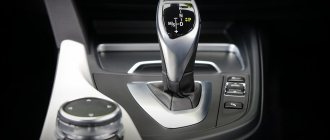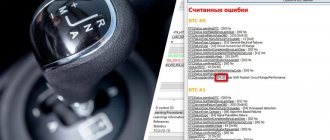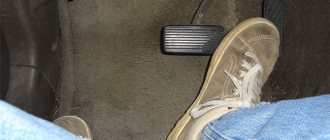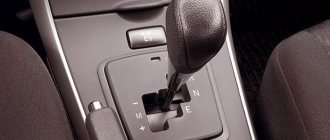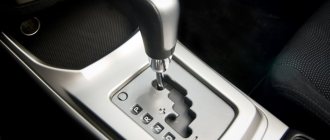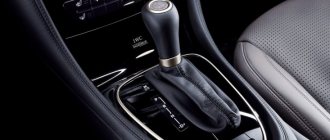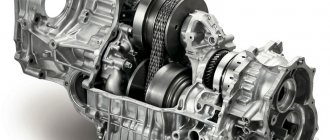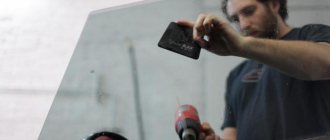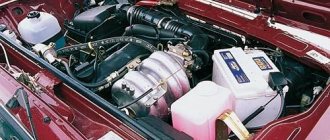In terms of its design features, a robotic gearbox is a manual transmission, with the exception that gear shifts and clutch operation are carried out using an ECU and servomechanisms.
This box has both its pros and cons. The main advantage is fuel efficiency, as well as the relative ease of production of single-disc AMT type robots. As for preselective robotic gearboxes (DSG and analogues), their main advantage is the double clutch, due to which gear changes occur very quickly and unnoticed by the driver.
The disadvantages of both types of robotic gearboxes are very rapid wear of clutch packs, individual actuators, contamination of sensors, souring of contacts, problems with mechatronics, solenoids, etc.
At the same time, repairing and servicing the robot box will not cost the car owner cheap. For this reason, it is necessary to maintain the manual transmission on time and operate the unit correctly. Next, we will look at the features of operation and maintenance of the robot box, and also answer the question of whether the robot box can be towed.
Features of driving with a robotic gearbox
Since the robot is a compromise design, some features of driving a car should be taken into account. For example, a robotic unit does not always switch speeds correctly, which leads to a drop in acceleration intensity. When you press the gas pedal sharply, the gears shift downward with a delay. This feature should be taken into account when overtaking on the highway, especially when driving into oncoming traffic.
Is warm-up required?
The robotic gearbox does not require oil heating. After starting the engine, it is recommended to stand for 20-60 seconds until the gears scatter the lubricant over the friction surfaces. It is necessary to warm up the car in winter for several minutes until the engine speed stabilizes. Then you can use the car. The selector is moved to position A.
When the engine warms up, it is not necessary to set the gearbox selector to various positions, by analogy with hydromechanical units. After starting to move, it is recommended to drive 1-2 km at a reduced speed to reduce the load on the rubbing surfaces. Since the gearbox housing is located at a distance from the power unit, the oil in the transmission heats up after 10-15 km of travel.
Starting the upward movement and overcoming the descent
To start moving uphill in a car with a robot gearbox, you need to move the lever to position A, while simultaneously holding the car with the parking brake system. The driver then releases the brake lever and increases engine speed.
To reduce the rollback of the car, the driver needs to catch the moment the clutch is engaged and at the same time release the handbrake lever. Before starting to operate the car, it is recommended to perform several test attempts to start on a hill in order to understand the moment when the clutch begins to operate. In winter, the box switches to manual gear selection mode, which reduces slippage at the beginning of movement. After acceleration, the speeds are switched forcibly or the selector is moved to the automatic position.
As the speed increases, the transmission will increase gears, but if the engine speed drops, the transmission will switch to a lower speed in automatic mode. When driving downhill, the lever remains in position A, the gas pedal is released to apply engine braking.
To further reduce the speed, press the brake pedal. There is no need to shift the transmission selector to neutral.
Stopping and parking
A car with a robotic unit stops using standard brakes. The driver then sets the gearbox lever to neutral and engages the parking brake. The brake pedal is released, the driver can turn off the engine and remove the key from the lock. When stopping, for example at traffic lights, it is permissible to leave the selector in the forward position. When parked for a long time, it is necessary to move the lever to the neutral position, since the clutch wears out in the depressed position.
Other modes
Robotic gearboxes support additional operating modes:
- The mode, indicated by a snowflake icon, is intended for movement in winter. The box controller ensures starting from second gear and changes the gear shift algorithm, reducing wheel slip on slippery road surfaces.
- The “sport” function allows you to change gears at higher engine speeds, which ensures dynamic acceleration.
- Manual mode, which allows you to forcefully control the gearbox.
Why can't you tow a car with faulty brakes using a flexible cable?
Why is it prohibited to tow a car with faulty brakes using a flexible cable? ... A vehicle with faulty brakes continues to move when the lead vehicle stops and an accident may occur.
Interesting materials:
How to disable a hidden number active Kazakhstan? How to disable a hidden number on a Nokia phone? How to disable SMS to Beeline short numbers? How to disable SMS from number 2002? How to disable SMS from number 312? How to disable SMS from number 5016? How to disable messages from MTS short numbers? How to disable the Vodafone Caller ID service? How to disable the room rent 50 service? How to disable the service from number 5016?
How to tow a car with an automatic transmission or robot
On the main highway of the city, the engine suddenly failed. The situation is not pleasant. First thought: the car is expensive, under warranty, which means you need to get to the service center, but how. There are two options: on a tow truck or using a “tie”. If with the first everything is simple: call, pay and go, then with the second everything is much more complicated.
On a rope: is it possible to tow a faulty car with an automatic transmission and is it allowed for a car with an automatic transmission to take on the load?
Unpretentious mechanics are gradually being forced out of the production program of almost every car company. This is the general industrial trend. However, neither an automatic transmission nor a CVT guarantee such multi-range functionality that any classic “mixer” offers.
The principle of “comfort at the expense of practicality” first appears when deciding whether it is permissible to tow a car with an automatic transmission by another vehicle. This topic arises as a result of the fear of breakdown of such a complex organism. Indeed, due to the intricacy of its design, repair prices range from 5% of the cost of the car and above.
Experts note that it is permissible to tow a car with an automatic transmission. But this does not mean 100% access to this type of operation of a comfortable car. That's why:
- box parts are lubricated under pressure created by a special oil pump;
- The performance of the oil equipment is determined by the operation of the engine.
Logically, an interesting situation arises. If the motor is running, the box is lubricated. In this state of affairs, there will be no harm from reasonable towing, say a Toyota RAV4.
What to do if the motor is faulty? Even in this situation, car enthusiasts advise with some caution to drag the car, following the rules of common sense. You should not follow this advice directly. You need to contact the best expert - a booklet on the operation of a specific model. In this case, some manufacturers actually allow the tie to be “hanged” over short distances.
How to tow a car with an automatic transmission and other tips
What does the term “competent towing” mean? These are basic rules, the observance of which will preserve the life of such an expensive unit as an automatic transmission. They are simple:
- Travel speed – no higher than 40 km/h.
- The distance covered without long-term parking is up to 40 km.
- The movement mode is smooth, without sudden jerks.
Is it possible to push the car?
A car with a manual transmission can be pulled or pushed with the transmission in neutral over almost any distance without problems, since only one gear rotates during this movement. … Thus, it is best to tow the vehicle with the engine running.
Interesting materials:
At what age do historians think Pharaoh Tutankhamun died? At what age does vision deteriorate? At what age were you crucified? At what age should male rabbits be housed? At what age does stubble grow? At what age do Yorkies lose their teeth? At what age did Alan Rickman die? At what age did Lil Peep die? At what age did Zadornov die? At what age should you hang your mobile phone on your crib?
Is it possible to tow a Solaris automatically?
A vehicle equipped with an automatic transmission can be towed with the engine not running at a speed of no more than 50 km/h for a distance of no more than 30 km. Otherwise, the gearbox will fail, since the automatic transmission fluid pump does not work and its parts are not lubricated.
Interesting materials:
What is a metro? What are interstate and international relations? What is the instantaneous speed of uneven motion? What are instant notifications in VK? What is indicator flashing? What is mineral powder? What is the world of ideas? What is world politics? What is mycelium? What are mode and median in mathematics?
DSG. Tips for towing
Even a novice, inexperienced car enthusiast knows that automatic transmissions must be operated taking into account the special requirements of the manufacturer. If you own a car with a robotic gearbox, then you need to be especially careful. According to many experts and mechanics, the DSG is much more “capricious” to use than classic automatic machines. Therefore, it is necessary to thoroughly know not only the algorithm for using the unit during movement, parking, but also in the event of emergency situations. It’s not common, but it happens that the car breaks down while driving.
It is advisable for the car to be delivered to the place of repair or parking by tow truck, but this is not always possible. Then you can resort to standard towing, but you need to know exactly how the driver should act. Towing a car with a DSG is much more difficult than performing this task when moving a car with a standard manual transmission.
Recommendations from professionals
The car owner must know at least the basic operating principle of the robotic unit in order to avoid mistakes. You must understand that when the power unit is running, a certain pressure is created in the transmission system, due to which high-quality lubrication of the working elements occurs. This does not happen when towing, so it is worth familiarizing yourself with the basic rules for emergency movement of equipment:
- The vehicle can only be moved forward.
- Be sure to check the position of the gearshift lever. It should be in the “N” position.
- There are strict speed limits; you cannot reach high speeds. The optimal mode is considered to be 15 km/h. The maximum permissible level corresponds to 20 km/h.
- You also need to understand that you cannot move the car over significant distances. If you neglect this advice, you may encounter failure of the manual transmission. The permissible towing distance should be within 15-20.
- You will not be able to tow the car in the standard way if the cause of the malfunction lies directly in the mechanical components of the DSG. In such cases, the wheels that belong to the drive drive should be hung. If this procedure fails, towing is strictly prohibited. Separately, it should be noted that towing vehicles with all-wheel drive is prohibited.
- If it is possible to solve the problem with the suspension of the wheels of the drive axle, all restrictions associated with the range of movement of the vehicle are removed. There are also no restrictions when disconnecting the DSG from the power unit. The removed drive axles also allow you to move the machine in this way over arbitrarily long distances and without speed limits.
- Many motorists forget that automakers prohibit towing vehicles with manual transmission in cold weather. If the thermometer is near zero, you can no longer solve the problem in this way.
Types of automatic transmission
Car owners traditionally call the entire transmission of a car a gearbox. From a technical point of view, the gearbox is considered to be only that part of the unit in which a number of planetary gears are located that ensure gear shifting.
An automatic transmission can be considered any device that changes gears without driver intervention, but traditionally the name “automatic transmission” has been assigned to a hydromechanical design. Conventionally, automatic transmissions also include a variator and a robotic gearbox.
Traditional automatic transmission
A traditional automatic transmission includes: a torque converter, a manual gearbox and a control system. And it is, in fact, a hydromechanical transmission. The torque converter in the automatic transmission acts as a clutch, i.e. it provides smooth supply and adjustment of torque from the engine to the gearbox. All its parts are enclosed in a housing in which they are in a special oil fluid - ATF.
When the engine starts, the crankshaft begins to rotate, and the movement of the torque converter pump wheel starts. It moves the ATF working fluid to the turbine wheel, which begins to rotate and transmits torque to the planetary gearboxes. The torque converter develops maximum torque at minimum speed.
As the speed increases further, the rotation of the pump and turbine wheels are aligned, the torque converter is locked, and torque is transferred directly from the engine to the manual transmission. Thus, when you press the gas pedal and increase the speed and vice versa, the gears are switched automatically.
Type-tronic
The type-tronic design is a type of automatic transmission that has a manual control mode. The driver can select gears manually while driving by moving the lever in the "+" and "-" directions. The structure of such a box is not fundamentally different from the traditional one; only the automatic control and gear shift lever are changed.
Driving a car with a type-tronic gearbox can be performed in two modes: full automatic and manual control. Manual mode imitates the control of a manual transmission in a sports car, but does not require the same serious skills and qualifications from the driver as from professional athletes in auto racing mode.
Robotic box
This transmission can be conditionally classified as automatic, since, in fact, it is a manual gearbox, but with electronic control. Gear shifting and clutch engagement are controlled automatically. The driver and driving conditions provide the input of information, and the operation of the box itself is started by an electronic unit, which contains a specific control algorithm.
The electronic control system includes sensors that receive information about rotation speed, selector lever position, oil level and pressure. They transmit information to the control unit, which analyzes them and selects the appropriate operating algorithm.
The robotic box can operate in two modes: full automatic and semi-automatic. Semi-automatic mode allows the driver to manually select the mode using a lever. This function is similar to the type-tronic in an automatic transmission. In some sources, the robotic gearbox is called a sequential gearbox.
Variable speed drive
The CVT transmission has the generally accepted abbreviation CVT, which in its full form means “continuously variable transmission”. The variator does not have fixed gears and switching between them. During operation, the variator constantly smoothly changes the gear ratio as the vehicle speed changes, so this design very conventionally applies to gearboxes.
The design of a CVT transmission consists of two pulleys and a V-belt stretched between them. The pulleys consist of two cones, the narrow part facing each other. The change in gear ratio occurs due to the smooth sliding of the belt along a smaller or larger radius of the pulley, so when moving, the torque changes continuously and there are no jerks.
The CVT provides comfortable driving, maximum efficiency in using engine power and fuel economy. However, due to the high complexity of the design, repairing the CVT box is very expensive.
